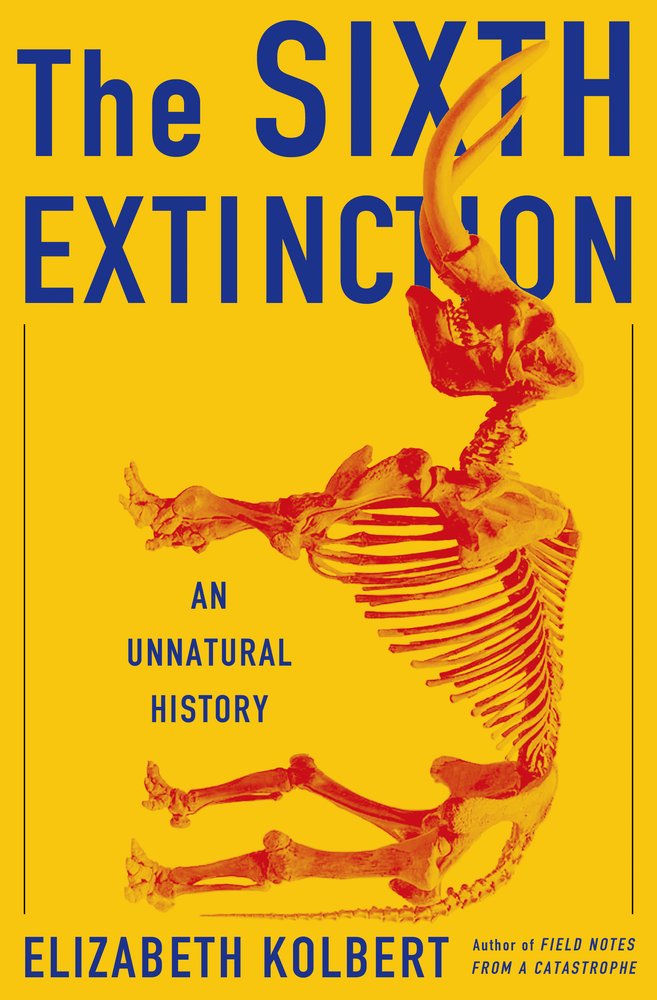Carbon dioxide from the burning of fossil fuels is warming the planet, melting glaciers and polar ice caps, raising sea levels, causing more destructive hurricanes, floods, and droughts and increasing ocean acidity. So far corporations, governments, electoral parties and the media are largely indifferent.
When presented with the evidence, profit-seekers may concede that perhaps something should be done. The claim that climate change is just a theory is used to justify inaction: no particular storm, hurricane or flood can be directly blamed on the burning of fossil fuels; perhaps the sun or tides or other natural cycles are to blame. Anyway, the threat is in the distant future — long beyond normal quarterly or annual financial reports, beyond the four or six year terms of most governing parties.
In The Sixth Extinction: An Unnatural History, Elizabeth Kolbert points to a direct, indisputable connection between rising atmospheric carbon dioxide levels and the increasing acidity of oceans.
A third of carbon dioxide added to the atmosphere rains into seas. Carbon dioxide dissolved in water becomes carbonic acid. As aquatic acidity rises, the shells of crustaceans weaken and dissolve. Billions of micro-organisms along with lobsters, oysters and coral reefs can no longer survive. As crustaceans disappear so do the creatures that depend on them as food sources, fishes and land animals like human beings.
Kolbert is a staff writer for The New Yorker who earlier published, Field Notes from a Catastrophe: Man, Nature, and Climate Change. As its title indicates, The Sixth Extinction focuses on epochal species extinctions. Current science records six major extinctions. The Fifth Extinction, the most widely known, wiped out dinosaurs 65 million years ago. It is attributed to a massive meteor strike off Yucatan. The immediate shock wave caused wide destruction. Clouds of dust then enveloped the planet, altering climates and vegetation.
Scientists call the current extinction, the Sixth, the Anthropocene, the human-caused extinction. The capacity of human beings to alter environments can be traced back at least 11,000 years when large animals, like mammoths, began to disappear. Since then, humans have leveled great forests, altered and blocked the flow of major rivers.
For the last 500 years global exchange and industrial capitalism have dramatically transformed flora, fauna and micro-organisms everywhere. Humans have added massive amounts of chemical fertilizers, herbicides and pesticides to soils and waterways. Our dependence on fossil fuel energy has increased carbon dioxide in the atmosphere to levels not seen in millions of years.
How much of a threat is rising carbon dioxide levels? The past may give us a glimpse of what could happen.
The Third Extinction, the End-Permian, 250 million years ago, was triggered by a massive release of carbon dioxide — from causes not yet understood. Temperatures soared. The chemistry of the oceans changed dramatically. As waters acidified, reefs collapsed; dissolved oxygen levels fell; aquatic organisms that relied on oxygen suffocated. They were replaced by others that used sulfur as an energy source. These gave off hydrogen sulfide, a toxin to most organisms on land and sea. “Glassy purple seas released poisonous bubbles that rose to a pale green sky.” Ninety per cent of land and ocean species disappeared.
Today rising carbon dioxide levels are measurably increasing the acidity of oceans. Coral reefs are shrinking in the Caribbean, off Australia and elsewhere. Other sea life is already under threat. In early 2014, Vancouver Island scallop producers reported that ten million scallops had failed to mature. British Columbia oyster stocks have also declined dramatically.
The Sixth Extinction leaves no doubt that carbon dioxide emissions are a looming catastrophe, far more serious than the profit-seeking establishment would have us believe. The problem is capitalism, a system that entitles major shareholders and top corporate executives to direct economies in their private interests. Capitalist competition drives corporations to maximize profits. Corporate control of the media makes people believe that profits are more important than employment, decent wages and the environment.
The Sixth Extinction makes it clear that action to cut reliance on fossil fuel energy is needed urgently. It is also a popularly written sketch of the evolution of scientific revolutions. Its many anecdotal asides make it an easy read.
Al Engler is a longtime trade unionist and author of Apostles of Greed, Capitalism and the Myth of the Individual in the market (1995); Economic Democracy, the Working-class Alternative to Capitalism (2010); and a co-author of The New Commune-ist Manifesto, Workers of the World it Really is Time to Unite! (2013)



